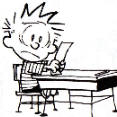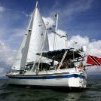-
Posts
418 -
Joined
-
Last visited
About Katsumoto
- Birthday 07/10/1981
Profile Information
-
Gender
Male
-
Location
The Netherlands
Recent Profile Visitors
-
 Katsumoto reacted to a post in a topic:
De Zeven Provinciën 1665 by Dražen - Scale 1:45
Katsumoto reacted to a post in a topic:
De Zeven Provinciën 1665 by Dražen - Scale 1:45
-
 Katsumoto reacted to a post in a topic:
De Zeven Provinciën 1665 by Dražen - Scale 1:45
Katsumoto reacted to a post in a topic:
De Zeven Provinciën 1665 by Dražen - Scale 1:45
-
 Cathead reacted to a post in a topic:
Wappen von Hamburg 1669 by Katsumoto - Corel SM28 - scale 1:50 - convoy ship
Cathead reacted to a post in a topic:
Wappen von Hamburg 1669 by Katsumoto - Corel SM28 - scale 1:50 - convoy ship
-
 BobG reacted to a post in a topic:
Wappen von Hamburg 1669 by Katsumoto - Corel SM28 - scale 1:50 - convoy ship
BobG reacted to a post in a topic:
Wappen von Hamburg 1669 by Katsumoto - Corel SM28 - scale 1:50 - convoy ship
-
 Katsumoto reacted to a post in a topic:
HMS Winchelsea 1764 by Frank Wouts 1/48
Katsumoto reacted to a post in a topic:
HMS Winchelsea 1764 by Frank Wouts 1/48
-
 Katsumoto reacted to a post in a topic:
Santa Maria 1492 by Katsumoto - FINISHED - Artesania Latina - scale 1:65
Katsumoto reacted to a post in a topic:
Santa Maria 1492 by Katsumoto - FINISHED - Artesania Latina - scale 1:65
-
 Scottish Guy reacted to a post in a topic:
Santa Maria 1492 by Katsumoto - FINISHED - Artesania Latina - scale 1:65
Scottish Guy reacted to a post in a topic:
Santa Maria 1492 by Katsumoto - FINISHED - Artesania Latina - scale 1:65
-
 Scottish Guy reacted to a post in a topic:
Santa Maria 1492 by Katsumoto - FINISHED - Artesania Latina - scale 1:65
Scottish Guy reacted to a post in a topic:
Santa Maria 1492 by Katsumoto - FINISHED - Artesania Latina - scale 1:65
-
 Scottish Guy reacted to a post in a topic:
Santa Maria 1492 by Katsumoto - FINISHED - Artesania Latina - scale 1:65
Scottish Guy reacted to a post in a topic:
Santa Maria 1492 by Katsumoto - FINISHED - Artesania Latina - scale 1:65
-
 Scottish Guy reacted to a post in a topic:
Santa Maria 1492 by Katsumoto - FINISHED - Artesania Latina - scale 1:65
Scottish Guy reacted to a post in a topic:
Santa Maria 1492 by Katsumoto - FINISHED - Artesania Latina - scale 1:65
-
 Scottish Guy reacted to a post in a topic:
Santa Maria 1492 by Katsumoto - FINISHED - Artesania Latina - scale 1:65
Scottish Guy reacted to a post in a topic:
Santa Maria 1492 by Katsumoto - FINISHED - Artesania Latina - scale 1:65
-
 Scottish Guy reacted to a post in a topic:
Santa Maria 1492 by Katsumoto - FINISHED - Artesania Latina - scale 1:65
Scottish Guy reacted to a post in a topic:
Santa Maria 1492 by Katsumoto - FINISHED - Artesania Latina - scale 1:65
-
 Scottish Guy reacted to a post in a topic:
Santa Maria 1492 by Katsumoto - FINISHED - Artesania Latina - scale 1:65
Scottish Guy reacted to a post in a topic:
Santa Maria 1492 by Katsumoto - FINISHED - Artesania Latina - scale 1:65
-
Scottish Guy started following Katsumoto
-
 Katsumoto reacted to a post in a topic:
Wappen von Hamburg 1669 by Katsumoto - Corel SM28 - scale 1:50 - convoy ship
Katsumoto reacted to a post in a topic:
Wappen von Hamburg 1669 by Katsumoto - Corel SM28 - scale 1:50 - convoy ship
-
The battle continues, gluing bulkheads and reinforcement of the construction Hello everybody, yes I'm still alive and kicking. My professional work, called a career gets in the way sometimes. I'm just sorry for my absence lately but choices.....you know what I mean... This weekend was a weekend I claimed for modeling. I have glued up all the frame / bulkhead pieces and then glued them to the center plate. The construction was way to flexible in ships length so I had to reinforce the construction. Luckily I had a walnut dowel laying around which did the trick just fine and so I used my saw and chopped it into a lot of pieces. Glued all the pieces between the bulkheads and the thing is solid! The upper part of each frame / bulkhead are very very fragile. So I decided to glue small pieces of basswood (10x10mm) between the frames to create a shell. I used my table saw to saw some 10x10mm sticks and luckily the weather was nice this weekend here in The Netherlands. I'll bet the admiral wouldn't like the noise of the table saw and all the clouds of sawdust into the living room.... Well, that's it for this update, until the next one. Regards, Peter
- 30 replies
-
- Corel
- wappen von hamburg
-
(and 1 more)
Tagged with:
-
 Katsumoto reacted to a post in a topic:
The Mayflower by Knocklouder - Amati - 1:60
Katsumoto reacted to a post in a topic:
The Mayflower by Knocklouder - Amati - 1:60
-
 Katsumoto reacted to a post in a topic:
Cazador Jabeque / Xebec by Katsumoto - FINISHED -OcCre - 1:60
Katsumoto reacted to a post in a topic:
Cazador Jabeque / Xebec by Katsumoto - FINISHED -OcCre - 1:60
-
Thank you very much for the nice words. I’ve done my best on this model to show all the steps I’ve done during construction. It was a lovely built, really enjoyed it! Thanks again guys! Cheers, Peter
- 204 replies
-
- kitbashing
- Woodcarving
-
(and 4 more)
Tagged with:
-
 Katsumoto reacted to a post in a topic:
Cazador Jabeque / Xebec by Katsumoto - FINISHED -OcCre - 1:60
Katsumoto reacted to a post in a topic:
Cazador Jabeque / Xebec by Katsumoto - FINISHED -OcCre - 1:60
-
 Katsumoto reacted to a post in a topic:
Cazador Jabeque / Xebec by Katsumoto - FINISHED -OcCre - 1:60
Katsumoto reacted to a post in a topic:
Cazador Jabeque / Xebec by Katsumoto - FINISHED -OcCre - 1:60
-
Thanks for the encouragement Marc, you’re spot on with your assumption! anyway, thanks for following and leaving a message. Peter
- 30 replies
-
- Corel
- wappen von hamburg
-
(and 1 more)
Tagged with:
-
 Katsumoto reacted to a post in a topic:
Wappen von Hamburg 1669 by Katsumoto - Corel SM28 - scale 1:50 - convoy ship
Katsumoto reacted to a post in a topic:
Wappen von Hamburg 1669 by Katsumoto - Corel SM28 - scale 1:50 - convoy ship
-
Hi Bob all is well, thank you. With you the same I hope! The project will continue, however at this moment I’m going slow. I’m working 24/7 and have no time or spare time for modeling. Thanks for posting Bob and see you later! take care, Peter
- 30 replies
-
- Corel
- wappen von hamburg
-
(and 1 more)
Tagged with:
-
Great work on this beautiful kit. Not an easy kit to build, but you are doing a excellent job. Regards, Peter ps I’m living in the area of Rotterdam Born and raised from many generations of Rotterdammers. 😉 many of these so called two decker ships were built in Rotterdam, but also Amsterdam and Vlissingen as well. Most famous ship is the 7 Provincien ship.
-

Brig Le FAVORI 1806 by KORTES - 1:55
Katsumoto replied to KORTES's topic in - Build logs for subjects built 1801 - 1850
Just fantastic work! -
Hi Alex, She has become a beautiful ship and I have seen her in real life in Amsterdam. I wish you all the best with your next project and I see I'm captured on one of the pictures as well... 🙄🙂 It was nice speaking to you and hopefully see you next time again! Peter
-
Hi Christian, This is were you are probably right and thanks for warning me. I try to "work around" the problem by filling up the empty space between the upper parts of the frames with solid wood to create a complete solid shell. This should give me more stability and more wood to work with. I'm not sure will work out, it's all a big experiment for me. Thanks again, Peter
- 30 replies
-
- Corel
- wappen von hamburg
-
(and 1 more)
Tagged with:
-
Hi guys, This weekend I managed to get all the bulkheads out of the plywood sheet. I assembled them all and placed it on the main plate to give you a overall impression how it's going to look. 🙂 It was a pretty laborious job to get all the parts neatly fitted to one another, but it's done. Still in a dry-fit placement so nothing has been glued yet! The aft frame / bulkhead is not positioned correctly and sits a bit too low on the main plate. I need to correct this, but hadn't the time anymore, so this is for the next update. For the next update I need to check all bulkheads and then glue all the parts together to get 20 completely assembled and glued bulkheads. After that I can line out all the bulkheads and glue them in place on the main plate. Until next time! regards, Peter
- 30 replies
-
- Corel
- wappen von hamburg
-
(and 1 more)
Tagged with:
-
Good question! I considered to make these out of solid wood (pear) to be exact, however these parts of the bulkhead are completely covered by planking. Inner and outer planking, so the pearwood will not be visible. I found it more usefull to simply use plywood. The spaces between each bulkhead will be filled with solid wood, probably basswood or something similair. Hopefully I will create a solid hull by doning so.
- 30 replies
-
- Corel
- wappen von hamburg
-
(and 1 more)
Tagged with:
-
Hi Guys, A small update and continuation of the WvH project. I had a lot to think about the construction of the bulkheads and partly frames construction with the approach of the Quinger drawings. I'm still figuring out some things along the way, but the main picture is ready. One of the main aspects that I wanted to keep is the construction method of the hull designed by Corel. It's a nice system to gain an easy access to all the deck levels during the build. Firstly I have to make all bulkheads from the drawings and 4 of the total 20 are not included or needed. This is bulkhead 7, 9, 11 and 13. I decided to make them anyway! Second I give a view of the system that I am going to use. The picture below isn't 100% correct it's only to show how the system is going to be. Each frame / bulkhead (green) is connected to a central part (yellow) which has the same height on all frames. This will give me sturdy system to plank the hull on the outside. In a later stadium after planking the outside hull, I will remove the inner yellow part on each frame and only the green part will remain. (I will change this system a little bit later on during construction) The central plate is next to figure out. It's not 100% correct, I need some adjustments to make on some of the slots. Each slot will accept a bulkhead later on. The plans I'm working from arn't perfect, there are errors. The heights of the 1st deck level for instance is incorrect on the line drawings. By going slow, re-measuring things out of frustration curiosity, I see the errors upfront and fix them so I hopefully safe myself a lot of trouble later on in the build phase. Below the current state. I'm drawing each frame and checking it against the false keel and the other drawings I have. I marked the bulkheads yellow so you guys can see the bulkheads better. There isn't very much to show at this moment. Above the 1st deck, the bulkheads are developing into frames. The second part of the drawings are to devide each bulkhead into three parts. Each bulkhead becomes like a jigsaw puzzle. The connection between the inner and outer parts of the bulkhead is a strong joint. I used two colors on the drawings to simply show the process. The inner part is yellow the outer parts are green. After completing 20 or so frames / bulkhead it was time to cut them out. I used a simple hobby exacto knife to do this. For the green outer parts I left a lot of paper surrounding the frame so the shape remains true to the plan. With a simple glue stick the parts were glued on the plywood. I used a plain hand jigsaw to extract the parts from the plywood plate and after that use my Proxxon disksander to shape the parts. Some area's can't be reached by the sander so I used my needlefiles to get the job done. Yes this seams like a lot of work and it is! The yellow and green jigsaw pieces ready for assembly. Just for indication purposes a dry-fitted a few parts to check if I made any errors along the way, At first glance everything looks fine so far and the shape of the hull becomes reality. I need to extract a lot more pieces from the plywood, but that will be for a next time! Thanks for following this log and please feel free to ask me questions if you have any! Peter
- 30 replies
-
- Corel
- wappen von hamburg
-
(and 1 more)
Tagged with:
-
Hi Cisco, I use a Burmester curved ruler set for connecting the dots. They are cheap and easily available like on Amazon... Aristo AR5039 Burmester Curved Rulers (3 Pieces, Various Sizes and Designs) Orange-Transparent : Amazon.nl: Stationery & Office Supplies
- 30 replies
-
- Corel
- wappen von hamburg
-
(and 1 more)
Tagged with:
-
Thanks for your interest and support! Don't worry, I will, I just haven't got the time really due to a heavy schedule at my daily job. Just keep watching this topic and a new update will be placed soon. 😉
- 30 replies
-
- Corel
- wappen von hamburg
-
(and 1 more)
Tagged with:
-
Congratulations! Gorgeous model! Absolutely a labour of love.
- 510 replies
-
- reale de france
- corel
-
(and 1 more)
Tagged with:
About us
Modelshipworld - Advancing Ship Modeling through Research
SSL Secured
Your security is important for us so this Website is SSL-Secured
NRG Mailing Address
Nautical Research Guild
237 South Lincoln Street
Westmont IL, 60559-1917
Model Ship World ® and the MSW logo are Registered Trademarks, and belong to the Nautical Research Guild (United States Patent and Trademark Office: No. 6,929,264 & No. 6,929,274, registered Dec. 20, 2022)
Helpful Links
About the NRG
If you enjoy building ship models that are historically accurate as well as beautiful, then The Nautical Research Guild (NRG) is just right for you.
The Guild is a non-profit educational organization whose mission is to “Advance Ship Modeling Through Research”. We provide support to our members in their efforts to raise the quality of their model ships.
The Nautical Research Guild has published our world-renowned quarterly magazine, The Nautical Research Journal, since 1955. The pages of the Journal are full of articles by accomplished ship modelers who show you how they create those exquisite details on their models, and by maritime historians who show you the correct details to build. The Journal is available in both print and digital editions. Go to the NRG web site (www.thenrg.org) to download a complimentary digital copy of the Journal. The NRG also publishes plan sets, books and compilations of back issues of the Journal and the former Ships in Scale and Model Ship Builder magazines.










